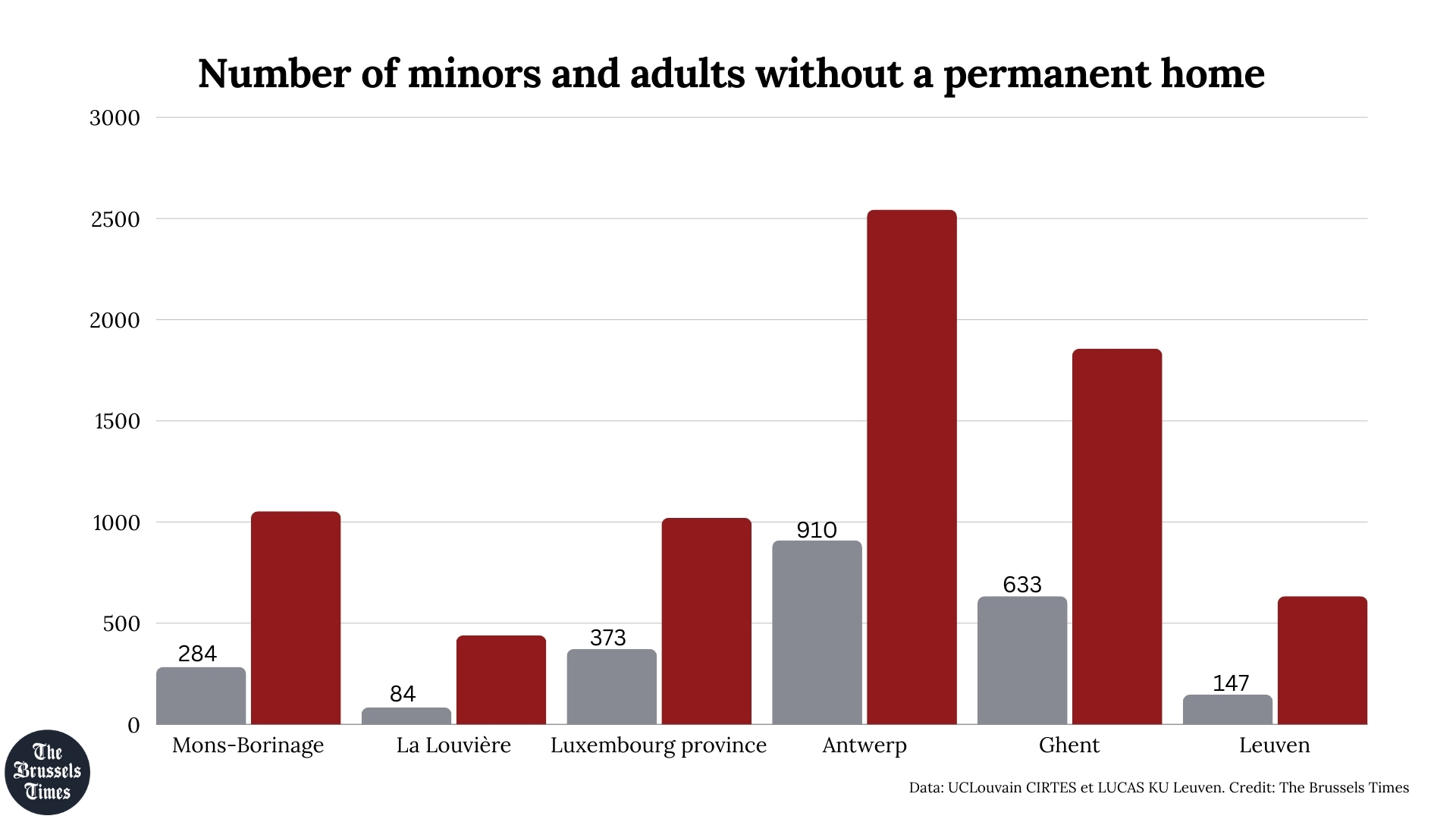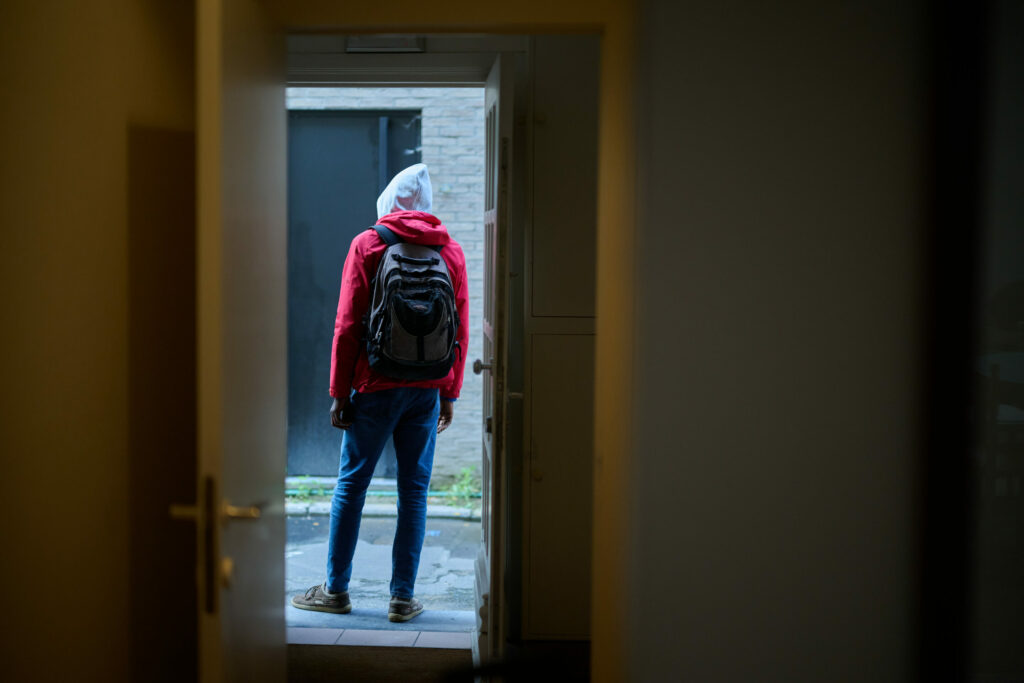The discussion of homelessness in Belgium tends to focus on precarity in Brussels. However, a new count has highlighted the scale of the problem in Flanders and Wallonia, where more than one in four homeless people is a minor.
Three years ago, Belgium pledged to end homelessness by 2030 through structural policies based on reliable data. The King Baudouin Foundation and research teams from UCLouvain CIRTES and LUCAS KU Leuven have carried out counts for the past four years, more recently in collaboration with local authorities. The figures collected will help optimise policies.
Counts involving 227 local authorities and 900 organisations conducted between 2020 and 2024 have allowed researchers to paint a picture of the homelessness situation across Flanders and Wallonia. The study did not include figures on Brussels, where the numbers are counted by Bruss'help every two years.
As well as mapping homelessness, the analysis looks into the profiles of those affected and how the situation differs in urban and rural areas. It also considers the effect of precarious living impacts mental health.
Thousands of children affected
The researchers estimated that in Wallonia 19,055 people are homeless or without a home. Of these 4,713 (24.7%) are minors. Despite having a larger regional population, an total of 19,479 homeless people was estimated in Flanders, based on counts in Leuven, Antwerp and Ghent.
The difference is explained by the higher level of poverty in Wallonia. However, it is thought that Flanders has almost 6,000 homeless minors (about one in three homeless). Only around 27.7% of minors are accompanied by their parents.

Results of 'point-in-time' counts carried out in 11 municipalities in the Mons-Borinage district, La Louvière, 34 Luxembourg municipalities, and Antwerp, Ghent and Leuven (Minors in grey, adults in red).
"These children are directly affected by their parents' housing situation," the researchers noted. Most of these young people live in emergency or temporary accommodation (42.3%), while around one in four stay with relatives. Around 10% find themselves in accommodation where they are threatened with eviction. "Even if they are not sleeping rough, their living situation is highly unstable."
Around one in three homeless people are women. "They mainly spend the night in temporary accommodation with family or friends, making them less visible," researchers noted. Half of the women had children with them.
The findings go against the presumption that the majority of homeless people are undocumented migrants. In Wallonia, the majority of homeless people have Belgian nationality. In Flanders, where the focus was more on the metropolitan context, there is a correlation between migration and homelessness, driven by the fact that single male asylum seekers are denied the shelter to which they are legally entitled. Still, in big cities this group only makes up about 15-20% of total homelessness.
The side we don't see
Researchers set out to map homelessness and highlight less visible instances. To this end, they counted people staying in non-conventional spaces – such as their car or a garage – as well as those on the streets and in emergency shelters. They also tried to include people moving between their family or friends' couches.
Except in the various Luxembourg municipalities, the group staying with family and friends represents the largest portion of homeless and was comprised mostly of young adults and women. The majority of homeless people sleeping rough were male. However, this group represents less than 5% of the total number of homeless people.

Credit: Marc Wallican - W13
"'Visible homelessness' is only the tip of the iceberg. The stereotypical image of the homeless man on the street does not represent the reality of homelessness," researchers observed. "Sleeping on the street, in emergency shelters or a non-conventional space is a reality in Belgium."
The latest count in Brussels also sought to highlight less visible forms of homelessness. Odisee University College, which is working to bring a better understanding of the issue in Brussels, argues that the stereotype of a "unkempt and drunk homeless person" is deeply rooted but "the reality is much more complex."
Moreover, homelessness is not exclusive to large cities, with the findings in Flanders and Wallonia showing that almost 10% of homeless in those regions live in municipalities with fewer than 15,000 inhabitants. Around 30% live in towns and cities with between 15,000 and 50,000 inhabitants. In Wallonia especially, there are more homeless people in the small municipalities than in the smaller Flemish municipalities.
Precarious health situations
More than two-thirds of homeless people surveyed for the research have health problems. Almost one in three are thought to be dealing with mental health issues and addiction, predominantly Belgian nationals between 30 and 50 years old. Almost 10% are thought to have a mental disability and 40% of those counted have multiple health problems.
When they do receive treatment for health complications, homeless people frequently stay in the healthcare institution for longer than is necessary because they have nowhere else to go. This adds pressure to the national healthcare system.
In light of the results, researchers stressed the need for adapted housing for people with health problems. They held up the 'Housing First' project as an example of sustainable housing for people with mental health issues or addiction. In Finland, homelessness has fallen dramatically since this approach was rolled out nationwide.

